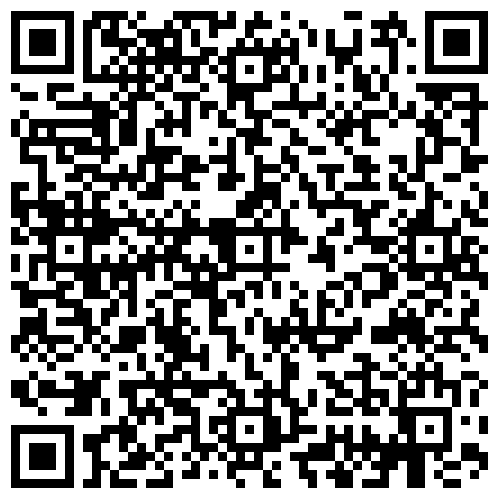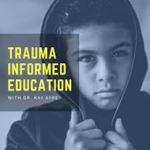4 Positive psychology and trauma-informed education with Dr Tom Brunzell
Positive psychology is a field that studies strengths, resilience, and wellbeing. Instead of focusing on problems, it encourages the development of positive emotions, engagement, and strong connections to support learning and personal growth. How can positive psychology be applied in classrooms to support trauma-affected students in building self-efficacy, emotional regulation, and a sense of belonging?
Dr Tom Brunzell
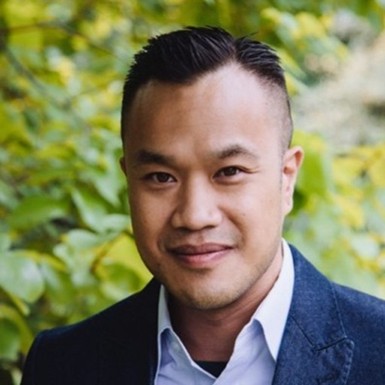
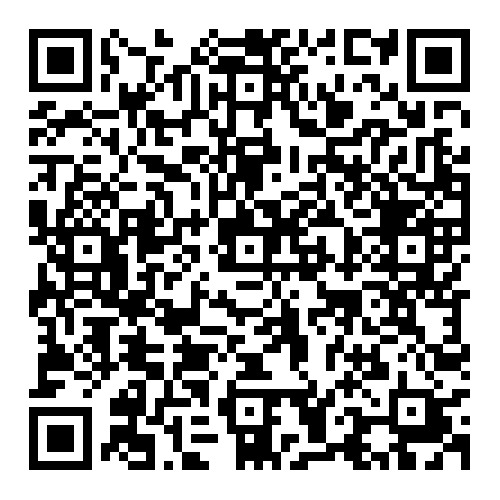 Dr. Tom Brunzell started his teaching career with Teach for America (TFA) in the Bronx, New York City. As Dean of Students and a literacy teacher at KIPP Infinity Charter School, he worked closely with students and families while mentoring teachers through classroom observation and curriculum feedback. He is now Senior Advisor, Teaching and Learning, for Berry Street Childhood Institute in Victoria, Australia. Tom and his team at Berry Street have launched the Berry Street Model of Education, – a trauma-informed approach to education.
Dr. Tom Brunzell started his teaching career with Teach for America (TFA) in the Bronx, New York City. As Dean of Students and a literacy teacher at KIPP Infinity Charter School, he worked closely with students and families while mentoring teachers through classroom observation and curriculum feedback. He is now Senior Advisor, Teaching and Learning, for Berry Street Childhood Institute in Victoria, Australia. Tom and his team at Berry Street have launched the Berry Street Model of Education, – a trauma-informed approach to education.
Learn more about Dr. Brunzell’s work by clicking or scanning the QR code.
Dr. Brunzell: I started as a teacher in the Bronx. I initially taught upper primary and middle years. And in the Bronx, for those who know a bit about New York, our school was a few blocks from Yankee Stadium, right in the heart of the Bronx. Although my colleagues and I were very well-meaning and shared many of the same values about public education, we did not yet understand how to integrate a resilience and strengths-based approach to whole school design at that point because the research wasn’t there, so we did our best.
At the time, I lacked effective strategies to support my students’ learning and wellbeing. As a result, I became frustrated and mirrored the anger of my students, who were struggling due to systemic barriers in education. Fast forward from there, I became a leader in that school. I was asked to co-found the KIPP Infinity Charter School. Over a decade ago, we became very interested in how to be the best of what we know now to be wellbeing research into a whole school approach.
I had the great fortune to be in the right place at the right time to work with Martin Seligman and Angela Duckworth at the University of Pennsylvania. Their educational research has prioritised wellbeing, school flourishing, grit, perseverance, and how teachers can use positive psychology research in complex classrooms. I have particular concerns about student behaviour management practices. I know trauma-informed and positive behaviour support; values-wise, our work marries up quite well.
Berry Street
Dr. Brunzell: Berry Street is Victoria’s largest child and family welfare organisation. We are primarily a major sub-contractor to Victoria’s Department of Health and Human Services. Our business is looking at childhood vulnerability and specifically out-of-home care, foster care, in-home care, clinical and psychology support services, family violence and a range of education services. We also run an independent school in Victoria in Ballarat, Moorewell, Nobel Park, and Shepperton for secondary students excluded from education. We are very much working with what we know to be the most vulnerable students in Victoria.
Vulnerability and trauma’s effect on childhood and early childhood go hand in hand when we look at why some of our students struggle. If my work in New York City represented incorporating strengths-based practice into education, coming to Victoria begins to form the second half of this coin: the post-traumatic growth and trauma-informed parts of my work. Berry Street attempts to understand how to integrate the science of wellbeing, strengths-based practice, and ideas of post-traumatic growth into educational trauma-informed practice . We started to pilot interventions in our school. Then, I became a PhD student at the University of Melbourne with Professor Lea Waters and Associate Professor Helen Stokes, who are very much part of the architects of what we do.
“We found two umbrella themes for trauma-informed practice for teachers. Those two things are building self-regulatory and relational capacities.”To truly understand trauma-informed practice, it’s essential to examine existing approaches. We found two umbrella themes that come forward for t is essential trauma-informed practice for teachers. The two core themes of trauma-informed practice are self-regulation and relational capacity. Self-regulation includes emotional and physical regulation strategies such as mindfulness, de-escalation techniques, and fostering a strong mind-body connection.
 Relational capacity focuses on building strong, supportive relationships between students and teachers. Research on trauma-informed education highlights two key skills for students: self-regulation and relationship-building. Students learn best when they feel supported by teachers who genuinely care about their success, especially those who have experienced trauma. Vulnerable students are experts in authenticity. They know who is there for them, who has high expectations for them, and who needs to figure out how to teach them. We strengthen teacher practice with our work. I’d also like to link those two domains of self-regulation and relationship to a couple of other fields, which is what our work does.
Relational capacity focuses on building strong, supportive relationships between students and teachers. Research on trauma-informed education highlights two key skills for students: self-regulation and relationship-building. Students learn best when they feel supported by teachers who genuinely care about their success, especially those who have experienced trauma. Vulnerable students are experts in authenticity. They know who is there for them, who has high expectations for them, and who needs to figure out how to teach them. We strengthen teacher practice with our work. I’d also like to link those two domains of self-regulation and relationship to a couple of other fields, which is what our work does.
The VIA Character Strengths (see box below for further information) work pioneered by Seligman and Peterson in 2004 incorporates worldwide research. Research highlights two essential character strengths for student wellbeing: self-regulation and love. In the Berry Street model, love is closely linked to a student’s ability to form secure, meaningful attachments with others. I link those two ideas of self-regulation and relationship to what we now suspect is imperative for 21st-century learners. As a 21st-century learner, you must be creative and collaborative and have strong relationships throughout your learning journey.
To be self-regulated in the uncertainty of learning and to form strong relationships to bolster your education are the two things that trauma and early childhood trauma profoundly impact and impede. The two skills that must occur for our young people to be successful in their unknown future are the two things they have had compromised in their early childhood experiences. It’s fascinating and helpful that themes run through therapeutically-informed and wellbeing-informed education. As a teacher and a teacher-leader, I like it when themes come up because teachers are busy and have a lot to do, so we try to unify these messages in strategy for them.
VIA Character Strengths
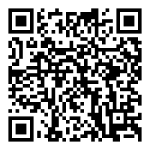 The VIA Character Strengths framework, developed by Martin Seligman and Christopher Peterson, identifies 24 universal character strengths—such as perseverance, kindness, and curiosity. Designed in response to the deficit-focused models in psychology, the VIA framework helps individuals recognise and cultivate their strengths to enhance wellbeing, resilience, and personal growth. The Authentic Happiness Test Center, developed by Dr. Martin Seligman and his team at the University of Pennsylvania, offers a range of free, research-based psychological assessments to help individuals explore their strengths, wellbeing, and overall happiness. Take the test and identify your own character strengths.
The VIA Character Strengths framework, developed by Martin Seligman and Christopher Peterson, identifies 24 universal character strengths—such as perseverance, kindness, and curiosity. Designed in response to the deficit-focused models in psychology, the VIA framework helps individuals recognise and cultivate their strengths to enhance wellbeing, resilience, and personal growth. The Authentic Happiness Test Center, developed by Dr. Martin Seligman and his team at the University of Pennsylvania, offers a range of free, research-based psychological assessments to help individuals explore their strengths, wellbeing, and overall happiness. Take the test and identify your own character strengths.
Take the VIA Character Strengths test or scan the QR code (above) to access the website.
Dr. Ayre: It gives teachers something to visualise and hang onto, rather than all that information swimming around out there and not knowing what they can cling onto and use to make a difference. Here, you’ve got something concrete.
Dr. Brunzell: We have something concrete. It’s important because the teachers I know here in Victoria and across the country we work with want to do their best. When teachers complain about the endless carousel of new ideas and new fads, we understand. What we’re trying to do in our work is validate those of us who have been working this way and doing this for years and need the language and the research to put on top of what we’re doing to spread the good word and to supervise our other colleagues well. We also want to inspire other people to learn this. You would not be surprised from your own work, that when we work closely with staffing groups, that eager front row are first years who are vigorously taking down notes, and I look at them and ask, “Is this a review for you? Have you done this in your training?” and they say “No, not yet. Our training is jam-packed.” I understand that.
 We also have a role as a community service organisation in this acknowledgement. One more thing I’ve got to sneak in here is that we see everything as a dual process. Because of the research around mirror neurons and modelling relational co-regulation, your ability to be regulated by another person, that’s a dual process. We want teachers to teach these strategies well. Still, teachers are models of adulthood and must mirror the people we want our students to become . It is an advertisement for getting in, working hard, getting an education, showing patience, sticking to things, and persevering. Teachers need to show students that they’re de-escalated and have resilient strategies. We’re in this together, and I’m constantly working on myself and my path to self-development. I’m also working hard for you as your teacher. Our most vulnerable students, especially teenagers, know who’s there for them. We give a personal charge through our work that might energise them.
We also have a role as a community service organisation in this acknowledgement. One more thing I’ve got to sneak in here is that we see everything as a dual process. Because of the research around mirror neurons and modelling relational co-regulation, your ability to be regulated by another person, that’s a dual process. We want teachers to teach these strategies well. Still, teachers are models of adulthood and must mirror the people we want our students to become . It is an advertisement for getting in, working hard, getting an education, showing patience, sticking to things, and persevering. Teachers need to show students that they’re de-escalated and have resilient strategies. We’re in this together, and I’m constantly working on myself and my path to self-development. I’m also working hard for you as your teacher. Our most vulnerable students, especially teenagers, know who’s there for them. We give a personal charge through our work that might energise them.
Positive Education
“Teachers serve as role models, shaping the behaviours and values they wish to instil in their students.”
Dr. Ayre: The Berry Street Education Model incorporates the principles of positive psychology. Could you explain positive psychology and its importance when working with traumatised students?
Dr. Brunzell: I love this question! Positive psychology is reaching the second or third stage of maturity, where the early theorising is reaching a robust maturity. Positive Psychology is the empirical study of wellbeing. Before 2000, we looked at how people flourished and used their strengths, growth mindset and emotional intelligence. Often, the people studied in that research had mental health struggles. Around 2000, we started looking at people who were well and wanted to flourish. Suddenly, that study of what helps human beings become more of who they want to be became the science of positive psychology.
Positive education is the integration of the best of what we know about interventions for wellbeing and applying it to the school context. It makes me a little nervous when people say, “Oh, positive psychology; we’re doing that, or we’ve done that,” and I hope you can understand through my brief explanation that it worries me when I hear that as it makes it sound as if the schools going to do it this year and then move on or change something.
Dr. Ayre: Like it has a definitive beginning and an end.
Dr. Brunzell: That’s right. I’d instead describe positive psychology as a research project that continues, and we are continually pushing it forward. A school’s responsibility is to be a smart consumer. When a school wants to integrate something into their whole school approach or teaching practice, we want school leaders to look at the evidence and think about their own context. Are we thinking about all the differentiated student needs and all the complex unmet needs of the students? That’s where Berry Street has a role to play.
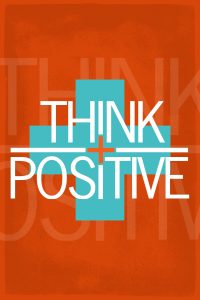 Positive psychology and positive education have enormously contributed to our understanding of character strengths, growth mindset, emotional intelligence, resilience, flow and engagement, and several other topics. Schools often take on those first five most often. We found that many of these strategies, such as growth mindset and mindfulness, are mediated skills, which means you’ve got to be well-regulated to sit in your chair and listen to your teacher and follow their directions to practice some of these interventions. The schools we were working with met the needs of some vulnerable communities and some very dysregulated students. Some teachers said, “Oh, I tried that mindfulness, and it doesn’t work”. When teachers are teaching mindfulness with up to 40 students in a classroom, and they’re not sure how to do it, we know that the first two rows are doing the mindfulness, those four over there are on their phones, those three over there are throwing something and the other seven at the back walked out of the room. The teacher then feels they’re a failure and that mindfulness isn’t appropriate and doesn’t work.
Positive psychology and positive education have enormously contributed to our understanding of character strengths, growth mindset, emotional intelligence, resilience, flow and engagement, and several other topics. Schools often take on those first five most often. We found that many of these strategies, such as growth mindset and mindfulness, are mediated skills, which means you’ve got to be well-regulated to sit in your chair and listen to your teacher and follow their directions to practice some of these interventions. The schools we were working with met the needs of some vulnerable communities and some very dysregulated students. Some teachers said, “Oh, I tried that mindfulness, and it doesn’t work”. When teachers are teaching mindfulness with up to 40 students in a classroom, and they’re not sure how to do it, we know that the first two rows are doing the mindfulness, those four over there are on their phones, those three over there are throwing something and the other seven at the back walked out of the room. The teacher then feels they’re a failure and that mindfulness isn’t appropriate and doesn’t work.
Now, we are mindfulness super fans. We know that some of our most dysregulated students must have the opportunity to practice mindfulness skills. They must know what it feels like in their mind, body, and mind-body connection, as well as those micro-moments of not feeling that buzzed-up feeling, adrenaline, or cortisoled-up feeling. We don’t want our teachers to give up on that. We need teachers to understand that there are several things they need to do in their classroom before effectively teaching these top-down or mediated skills. For example, I would not try to teach a class an hour of resilience self-talk skills if the classroom was completely dysregulated and they did not have a culture of stamina to work or personal de-escalation.
We have developmentally reordered the project of positive education and thought carefully about trauma-informed practice. What I’d like to see now for vulnerable classrooms is two sides of a coin; one side is trauma-informed practice, and the other side is positive education. Trauma-informed positive behaviour support is a critical piece of the pie to help schools. I find that the early focus of TIBS is looking at a student’s specific needs and creating an apparent positive behaviour support plan. The question is, “When is the student succeeding, and what are we doing when they’re in that strong mediated state and are ready to go”? We have taken that as our foundation and thought we still need to answer one question: “What can one teacher do with thirty or forty students at one time?” and “How can we support teacher strategies that link back to the values within a TIBS framework and still maintain a strong, healthy classroom management?”
Trauma Informed Behaviour Support
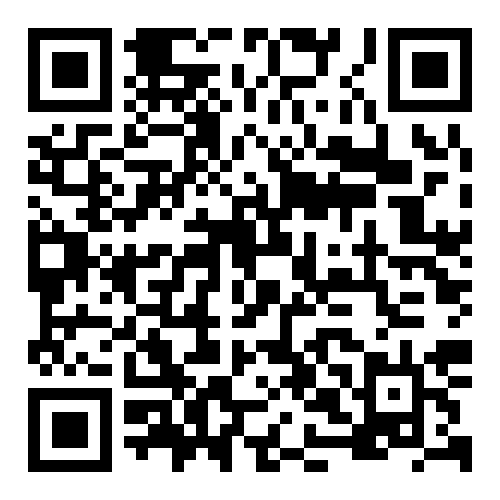 Complementing the Berry Street program, the Trauma-Informed Behaviour Support (TIBS) program integrates trauma-informed care with culturally responsive practices to support First Nations students in Australian schools. TIBS moves beyond traditional discipline by creating a culturally safe environment. It helps students regulate their emotions and stay engaged by incorporating Indigenous knowledge and strengths into the classroom. So, does the TIPBS approach to a holistic, multi-tiered approach translate into improved literacy, numeracy, and overall student success?
Complementing the Berry Street program, the Trauma-Informed Behaviour Support (TIBS) program integrates trauma-informed care with culturally responsive practices to support First Nations students in Australian schools. TIBS moves beyond traditional discipline by creating a culturally safe environment. It helps students regulate their emotions and stay engaged by incorporating Indigenous knowledge and strengths into the classroom. So, does the TIPBS approach to a holistic, multi-tiered approach translate into improved literacy, numeracy, and overall student success?
Check out our study in the journal Nature on the gains made by First Nations students in the Northern Territory following the implementation of the TIBS program.
Read the journal article or scan the QR code for access.
Dr. Ayre: The Berry Street Education model refers to five key domains of trauma-informed practice. Could you speak to the ‘body’ and ‘school-wide rhythms’ role in helping students manage their emotions?
Dr. Brunzell: We’ve categorised our work into five key domains, and this is the Berry Street foundational model where the research comes through these five domains. The first domain we call the ‘Body’ is the body specifically because no one taught me, in my training, that my student’s heads were connected to something and that something was their body. As a teacher, I would ask myself, “How do I increase my student’s cognitive flow?” And “How do I increase their learning?” If you’re trying to teach someone adrenalined-out, you only get about 2% of that person. You have to bring them into their bodies and into the room to teach them. To strengthen this work, we looked at the research on post-traumatic growth and the kinds of things that people reported that helped them grow from traumatic experiences.
It turns out that ‘body’ is an essential piece of that because the body stores trauma. Trauma is not stored verbally, so if we’re not addressing interventions for the body in the classroom, we’re not supporting the developmental approach to learning.
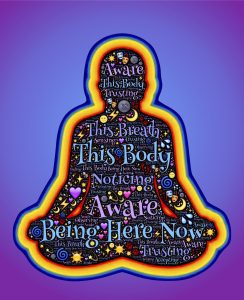 Another thing we’re saying is that the classroom, from a trauma-informed perspective, is a healing intervention in itself because many of the students we see, for systemic reasons, are not getting the clinical care they need or deserve. It would be lovely for all our students in care, home-based or residential care, to have regular psychology support, but they don’t get to those appointments, and the communities struggle to provide those services. Teachers are a loving community who see it as their job to support these students. It is their job because they’re often the only people who see these students regularly and are there for them. So, we put the body first. In the body domain, we discuss de-escalation, self-regulation, being present, centred and grounded, and mindfulness. All skills that we want the teacher to put into play to bring the body into a unified state so that they can take on the next bit of strategies they’ll learn.
Another thing we’re saying is that the classroom, from a trauma-informed perspective, is a healing intervention in itself because many of the students we see, for systemic reasons, are not getting the clinical care they need or deserve. It would be lovely for all our students in care, home-based or residential care, to have regular psychology support, but they don’t get to those appointments, and the communities struggle to provide those services. Teachers are a loving community who see it as their job to support these students. It is their job because they’re often the only people who see these students regularly and are there for them. So, we put the body first. In the body domain, we discuss de-escalation, self-regulation, being present, centred and grounded, and mindfulness. All skills that we want the teacher to put into play to bring the body into a unified state so that they can take on the next bit of strategies they’ll learn. want to bring to my next stage of education, workplace, or whatever else. We’re constantly thinking of ways and strategies to connect what the research is telling us with a strength-based way of working with the student’s reality .
want to bring to my next stage of education, workplace, or whatever else. We’re constantly thinking of ways and strategies to connect what the research is telling us with a strength-based way of working with the student’s reality .Suspension and Disciplinary Reform
“Trauma is not stored verbally, so if we’re not addressing interventions for the body in the classroom, we’re not supporting the developmental approach to learning.”
 The most dysregulated students thrive in structured, predictable environments. As we often say in our work, “Unpredictability creates instability.” When a group of teachers are inconsistent with these expectations or rules of the school, that’s unpredictable. At first, it felt like a party for the students, and they liked it. They take advantage of it, but then when they go to the next class, and that poor teacher is trying to hold that expectation and be consistent, it’s not fair to her. We think a lot about how we have the healthy expectation to restore what’s happened in the relational breakdown between student-teacher, teacher-teacher, or student-student.
The most dysregulated students thrive in structured, predictable environments. As we often say in our work, “Unpredictability creates instability.” When a group of teachers are inconsistent with these expectations or rules of the school, that’s unpredictable. At first, it felt like a party for the students, and they liked it. They take advantage of it, but then when they go to the next class, and that poor teacher is trying to hold that expectation and be consistent, it’s not fair to her. We think a lot about how we have the healthy expectation to restore what’s happened in the relational breakdown between student-teacher, teacher-teacher, or student-student.Impact of Exclusionary Discipline on Children
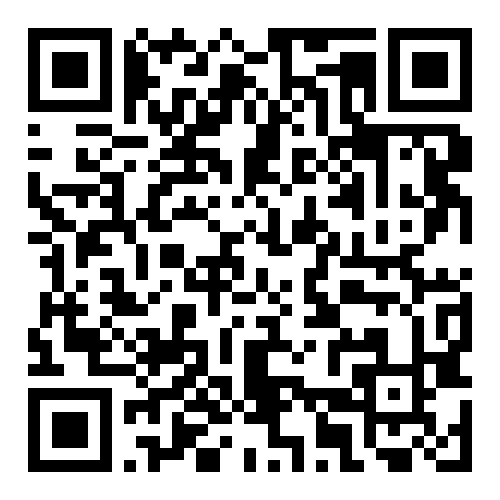 The School Exclusion Project, hosted by the National Indigenous Youth Education Coalition (NIYEC), is a vital resource for educators seeking to understand and address the disproportionate exclusion of First Nations students from Australian schools. This initiative sheds light on the systemic barriers that lead to school suspensions and expulsions, offering research, advocacy tools, and culturally responsive strategies to promote educational equity.
The School Exclusion Project, hosted by the National Indigenous Youth Education Coalition (NIYEC), is a vital resource for educators seeking to understand and address the disproportionate exclusion of First Nations students from Australian schools. This initiative sheds light on the systemic barriers that lead to school suspensions and expulsions, offering research, advocacy tools, and culturally responsive strategies to promote educational equity.
Read the journal article or scan the QR code for access.
Implementation Success and Barriers
Benefits for Students
“We want to see leaders modelling everything they want their teachers to do.”
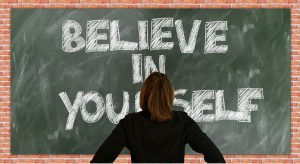 The second part of the project is to support and raise a conscious community. I like the words conscious and conscientiousness, which are the ability to increase your focus. Many things in today’s world are pulling our students away from their ability to focus, and we see that as a primary goal of our process. To increase someone’s ability to focus and manage their distractions. Finally, we want to balance care and service to self. Self-care is an integral part of wellbeing. And the care and service to others and our contributions to our communities. We will do an excellent job if those balances are constantly maintained in self-reflective practice.
The second part of the project is to support and raise a conscious community. I like the words conscious and conscientiousness, which are the ability to increase your focus. Many things in today’s world are pulling our students away from their ability to focus, and we see that as a primary goal of our process. To increase someone’s ability to focus and manage their distractions. Finally, we want to balance care and service to self. Self-care is an integral part of wellbeing. And the care and service to others and our contributions to our communities. We will do an excellent job if those balances are constantly maintained in self-reflective practice.Chapter Summary
- Students are successful if they can build a strong sense of regulation and relationships in the classroom.
- Positive psychology and positive education provide an understanding of character strengths, growth mindset, emotional intelligence, resilience, flow and engagement.
- We know that some of our most dysregulated students must have the opportunity to practice mindfulness skills. They must know what it feels like in their mind, body and mind-body connection.
- The most dysregulated students are crying out for the most predictability.
- The quality of school leadership dictates how successful and sustainable implementing trauma-informed practice will be.
- Creating cultures of classroom observation and feedback is vital to successful trauma-informed practice.
![]() Listen to the full interview on the Trauma-Informed Education Podcast
Listen to the full interview on the Trauma-Informed Education Podcast
Listen to our full interview with Dr Tom Brunzell on our Trauma Informed Education Podcast.
Listen to the interview or scan the QR code for access.
References
Ayre, K., & Krishnamoorthy, G. (Hosts). (2021, May 02). Trauma-Informed Physical Education with Dr. Douglas Ellison [Audio podcast episode]. In Trauma-Informed Education. SoundCloud. https://on.soundcloud.com/aiPOclLmOJc2ABW3eo
Krishnamoorthy, G., Harrison, E., Ayre, K., Forooshani, S. A., Berger, E., Rees, B., & Ulhaq, A. (2024). The impact of trauma-informed practices on academic outcomes of First Nations children: a pilot study of culturally responsive supports in Australia. Humanities and Social Sciences Communications, 11(1), 1-7. https://doi.org/10.1057/s41599-024-03892-8

